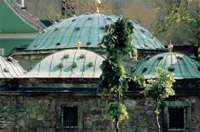

District I
Royal Palace
There have been palaces built here since the 13th century. However, they
seem to have been frequently razed to the ground, most recently during the
hand-to-hand fighting between the Germans and the Russians towards the end
of the Second World War.
The palace we see now was rebuilt in the 60's and 70's and houses several museums and art galleries. There is an interesting exhibition of finds from the medieval palace - don't miss the Matyas Fountain at the back.
The best way to get to the palace is via the little cable car (siklo) from
Clark Adam Square, which offers spectacular views on the way up.
Alternatively the meandering path with many staircases is also very
pleasant.
Fishermen's Bastion
No one seems to know why this is so named - it has certainly never been
called on to defend anything. The stories say that in the old days this was
where the fishermen defended Castle Hill from. It stands behind Matyas
Church, overlooking the river and was built around 1900 by the same person
who was responsible for the reconstruction of the church. There is a small
fee to pay to climb up it, but it is worth it for the views. It makes for
some of the finest photo opportunities in all of Budapest.
You can walk down the hill through the park from here, which is worth doing
as it means you will arrive at the small flat area immediately above the
entrance to the tunnel before continuing your descent.
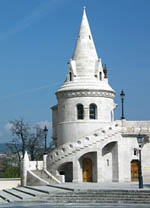
Buda Castle Quarter
After you've seen the Royal Palace, take a stroll northwards. The medieval
street network remains unaltered and although most of the buildings have
been thoroughly restored (the war damage was severe) many retain their
original features. You will be able to see the remains of the Dominican
monastery; note the Plague monument outside Matyas Church; walk along the
castle walls on the Buda side and see the Turkish tombstones at the
north-western corner. There are many places to eat out here, but you should
expect to pay tourist prices.
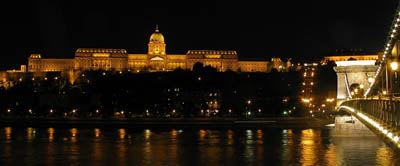
Matthias Church
There has been a church here since the thirteenth century, even though the
Turks converted many religious buildings into mosques. Although it was badly
damaged in the last war, it was restored (mainly rebuilt) in the sixties. An
original fourteenth-century Gothic portal survives on the south side of the
church. The interior is a riot of colour and the crypt can be visited. Organ
concerts - which are well worth attending - are often held here so it would
be an idea to check for more information in a local events guide on your
arrival.
9am-5pm Mon-Sat, 1pm-5pm Sun
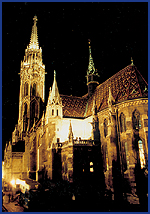
The best views of Buda are from the Duna Korzo, the Chain Bridge, or from one of the rooms and balconies of the world class hotels that line the Pest side of the Danube.
Chain Bridge
This spectacular bridge has an equally spectacular history. It's a great
place from which to take in a panorama of the city (which becomes even more
impressive at night). This was the very first bridge to link the two cities
of Buda and Pest. The project was started in 1839 by designer William
Tierney Clark and engineer Adam Clark, and it was completed in 1849. The
bridge celebrated its 150th birthday recently with a huge open-air festival.
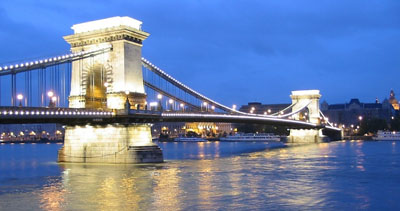
Funicular
The funicular is definitely the easiest way to get up to the top of Castle
Hill. Built in 1870, the two cars travel up and down every day from morning
until night. The carriages are lovingly maintained, and although modern,
have an antique look and design. The stations are also interesting - check
out the massive wheel, which operates the system at the top of the terminal.
Please note that the funicular is closed for maintenance on Monday of every
even-numbered week.
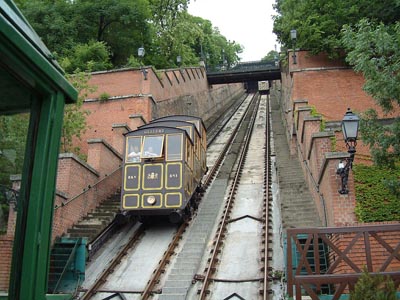
Kiraly Bath
This is one of the few remaining Turkish baths in Budapest. Built in 1565 by
the Pasha of Buda, it remains popular to this day. The Turks were so
concerned that they might not be able to use the hot baths if the city was
besieged, they had this one constructed within the castle walls. They piped
the water in over a considerable distance, and today the building stands as
a magnificent testament to their ingenuity. The four baths range in
temperature from a pleasing 26 degrees centigrade right up to an
endurance-testing 40 degrees centigrade. Please note that there are separate
days for men (Mondays, Wednesdays and Fridays) and women (Tuesdays,
Thursdays and Saturdays).
9am-9pm Mon, Wed, Fri; 6:30am-7pm Tue, Thu; 6:30am-1pm Sat
